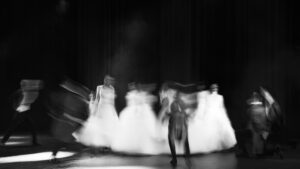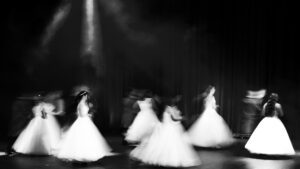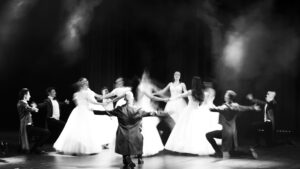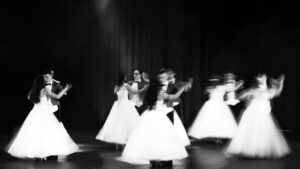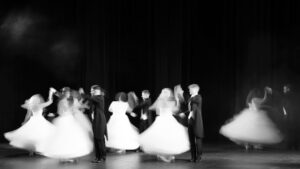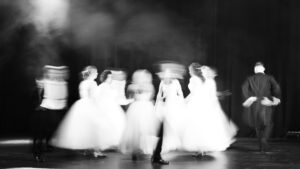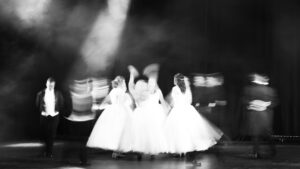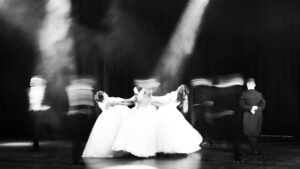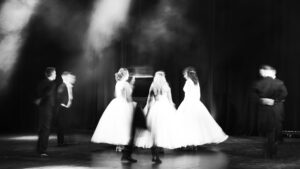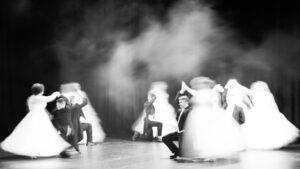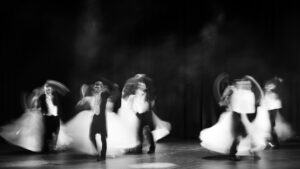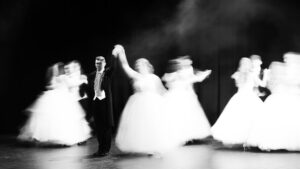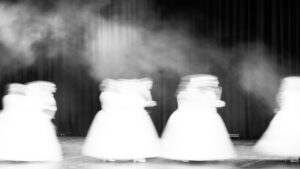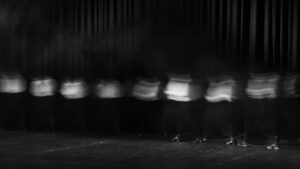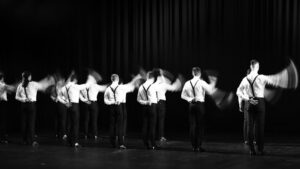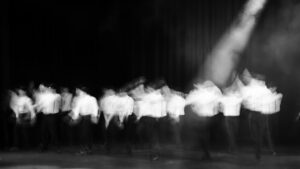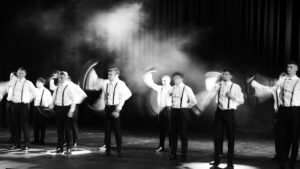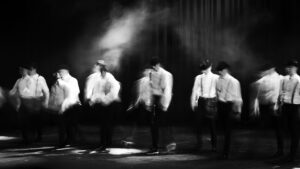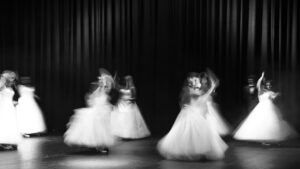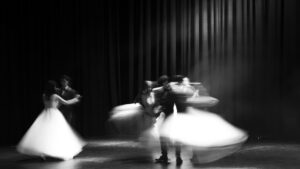Photographed November 25, 2022
Prom in Hungary looks different than in the Czech Republic, because only the graduating students dance. It is a kind of performance for family and friends. It is a festive evening full of dancing – of Hungarian dances, but also classical and modern styles. In this way, students traditionally celebrate the completion of their studies at secondary school. At least parents and grandparents are always present. And like all proms, it is truly an Event with capital E. Dance is one of humanity's oldest forms of expression, perhaps even as old as language. Since its beginnings a few thousand years BC, dance has been used to tell stories as a simple narrative form. It was also associated with the rituals inherent to the proto-societies back then. In the case of szalagavató, dance plays a similar role. Through the performance, the participants indirectly set in motion the dramatic culmination of their studies - the upcoming graduation exam that will test their high school progress up to this point and their readiness to leave the school. It is also a ritualistic affair, with students being presented with ceremonial ribbons and congratulations before the dance. Everyone is dressed up, it is a big night, often followed by a family celebration.
It is of significance that the fulfilment of these functions takes place through organised and choreographed movement. Students are in motion - from their teenage years and moving towards adulthood. It is an age of movement. Not only physical, but also mental. But at the same time, this movement is to a large extent, almost in a Foucauldian sense, determined by the institutions in which people of that age find themselves, such as the school, the family, their special interest groups and sports teams. Their choreography is set by parents, teachers, sports coaches, and other mentors. In this youthful, choreographed movement, the individual dancing classes almost form ornaments in the Krackauer sense. Ornaments that the school system and the state are obsessed with unifying and creating. Yet (and despite the very similar dress of all the dancers) the individuality of the participants, their unique imperfections or abilities in the dance, and the pursuit of individuation that is so crucial for the teenagers, can be seen in the dance movement.
As well as of the dancing and movement, it is also an evening of kitsch, both in the touched behaviour of the family who feel the need to take pictures of everything, the enthusiastic behaviour of the school children for whom it is a big night, and the choice of music. The combination of it all makes for sometimes painfully kitsch moments. I therefore find a semi-chronophotographic analysis thereof through the means of a long shutter speed a useful way of coping with this situation. This means allows us to both strip away the kitschiness and also delve into the significance of movement in this particular occasion.
